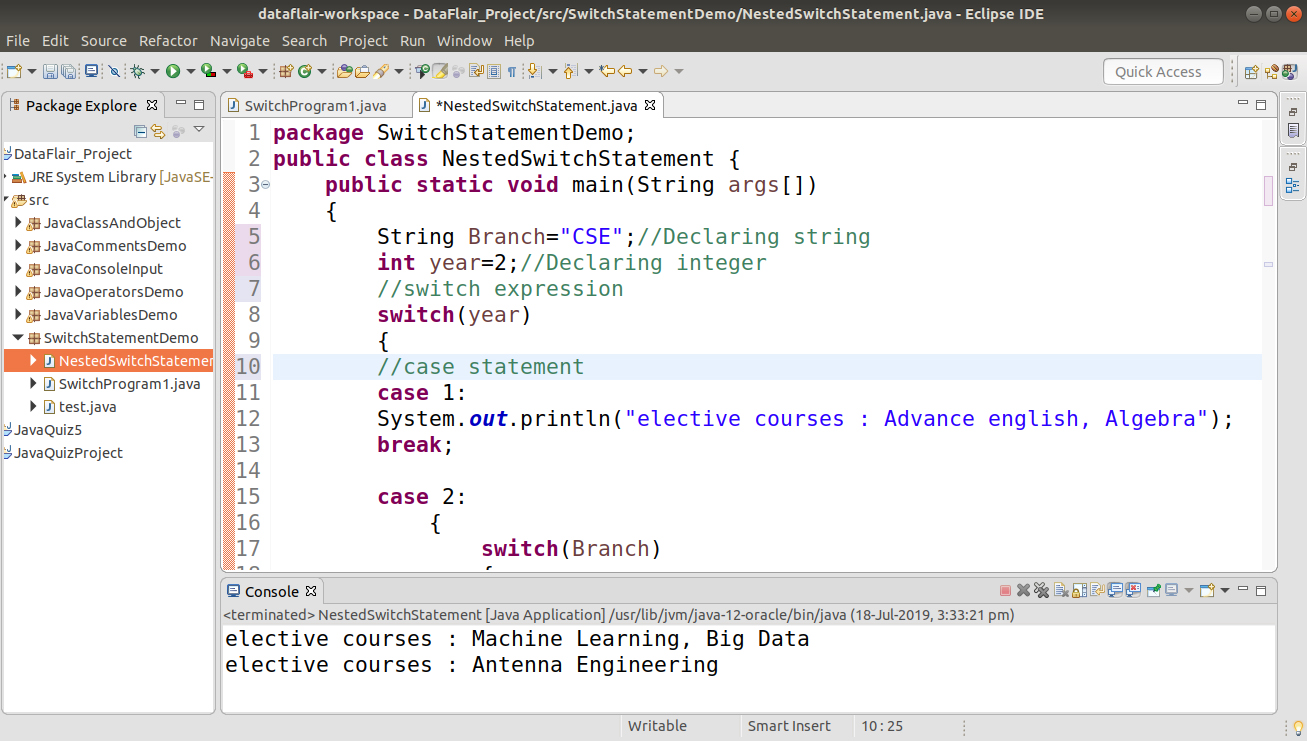

Consider the following code example: public void daysOfMonth(int month) Now, with the new form of switch label “case L ->”, the switch block code looks clearer, more concise and more readable. Java switch case Flow Chart If Case Option 1, then STATEMENT1 is executed, followed by a break statement to exit. New form of switch labelWith the traditional switch block, each case associates with only one constant – so you have to fall through multiple cases for a group of constants that share the same logic. The switch statement successively checks the value.
Use switch case java full#
Watch the full tutorial to understand how the Switch Case works in Java. A Java switch statement is a multiple-branch statement that executes one statement from multiple conditions. An if statement causes a branch in the flow of a programs execution. If the value of the expression matches the value of a case. Javas switch statement is the most suitable construct for multi-branched decisions. And the yield keyword is used to return value from a switch expression.Now, let’s see code examples to understand these enhancements for switch case construct. It executes one statement from multiple conditions based on the value of the expression. In switch(expression), the value of the expression is compared with the values of all the cases.

What’s new for switch block in Java 14?Java 14 adds a new form of switch label “case L ->” which allows multiple constants per case and returns a value for the whole switch-case block so it can be used in expressions (switch expressions). It will then go through each of the case statements in turn. This post provides some code examples to help you understand the new features added to the switch-case construct in the Java programming language, since JDK 14. The switch statement will check the user variable and see whats in it.


 0 kommentar(er)
0 kommentar(er)
